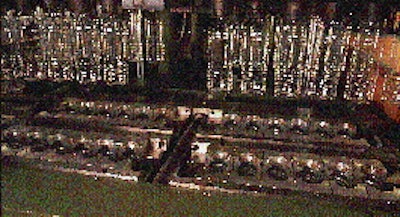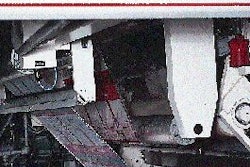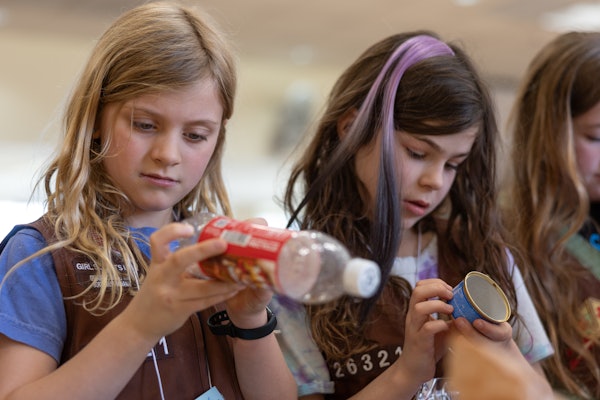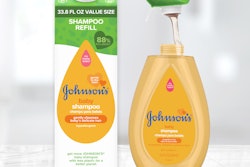The popularity of bottled waters and sports drinks continues to boost sales for bottlers and container manufacturers alike. To enter this market, San Jose, CA-based custom blow molder Premier Plastics purchased a 10-cavity machine to produce bottles of polyethylene terephthalate (PET). That machine injection/stretch blow molded 13 million 1/2-liter bottles last year. This year, production is expected to nearly quadruple to 53 million bottles. The huge increase stems from the installation of a 24-cavity ASB-300DP from Nissei ASB Machine (Atlanta, GA). Premier's machine, says the supplier, is among the first of that model operating in the U.S. At Premier, it joins forces with a 10-cavity Nissei 650 biaxial orientation stretch/blow-molding unit that enabled the molder to sell PET bottles in late '94 (see PW, August '95, p. 36). "Last summer," recalls general manager Jim Campbell, "when we were making plans to add the Nissei 300 to produce the 1/2-liter bottles, we expected to use the 650 to produce 1-liter bottles, but the demand for 1/2-liters has been so strong that we couldn't put the 1-liter mold on that machine. Our plan now is to add a third Nissei this fall, another 650 machine, to run the 1-liter bottles. And we still hope to round out the family with a 1.5-liter bottle in the future." Greater cavitation The primary advantage of the 300DP, of course, is its 24 cavities, which quickly strengthen Premier's position in the PET marketplace. "We're still a niche player in the PET bottle market, but it's a rapidly growing area and we feel we have the capacity on our equipment to produce considerably more bottles in the future," Campbell says. He explains that the new Nissei produces about 110ꯠ bottles/day. The single-stage injection/stretch-blow molding process for the machine is similar to that of the 650. However, "it's a more complex machine in that instead of a single row of tooling for 10 cavities, it uses a 2x12 configuration," explains plant manager Chris Walker. "There's more to the new machine." Premier relies on several PET resin suppliers, with Eastman Chemical's (Kingsport, TN) 9921W and Shell Chemical's (Akron, OH) Cleartuf® serving as the two primary resins used for the 25.5-g bottles produced on the new machine. Resin is delivered to Premier in railcar quantities, with the resin transferred to silos for storage outside the 100ꯠ-sq' San Jose plant. A vacuum system transfers the resin from a silo to a drying hopper at the top of the Nissei machine. At temperatures ranging between 300°F and 320°F, the hopper draws out moisture for approximately four hours to enable satisfactory processing of the PET resin. Once heated, the resin descends into the throat of a reciprocating injection screw. This screw is hydraulically rammed forward to inject a shot of the molten resin into 24 preform stations that include a neck or thread split and an injection core pin for each of the individual cavities. The preform is injection molded in the first of four stations used by the machine to produce the bottle. At the second station the preform is conditioned, then stretch/blow molded into the finished bottle at station three, followed by bottle ejection. An intermittent-motion table rotates the 24 bottles 90° to each of the four stations. The machine operates in a continuous process so that no station is empty at any point during the sequence. Throughout the four manufacturing stations, bottles are held neck-up by the neck or thread split. After injection molding at the first station, the table rotates the 24 preforms to the second station. Here, each approximately 4"-long preform is conditioned within one of 24 individual heating "pots" that include a conditioning core for cooling. "Each pot includes heater bands in three zones that can heat specific areas on the preform, and a conditioning core to cool areas," explains Nissei's Tom Talbot. "Heating and cooling specific areas help to maximize top-to-bottom material distribution when the bottle is molded." Premier maintains minimal bottle wall thickness of 0.008". The 28-mm neck area is not conditioned as it remains outside of the conditioning area. After conditioning, the table rotates to the third station where the conditioned preforms are stretch/blow molded into bottles. In the process, the molds close on the two rows of 12 bottles. A pneumatic rod descends through the open neck down to the preform gate. Simultaneously, a blow pin releases air into the preform. This stretch/blow combination creates the bottle shape. Next, the table rotates to the fourth station for ejection. Here, the neck split opens, releasing the bottles onto a takeaway conveyor where operators manually stack them on pallets, separated in layers by corrugated slip sheets. Complete pallet loads contain approximately 2ꯠ bottles. "We're designing an automated take-out system to handle bottles," notes Campbell. "We will model it after the robotic system from MTM (Beaverton, OR) that we installed earlier this year in our Tacoma, Washington plant to handle PET bottles used for salad dressings. With this system at San Jose, we'll be able to visually inspect bottles more closely to improve quality control. As our PET bottle volume grows, automating this aspect of our process will really help us." Customer satisfaction The increased capacity provided by the new Nissei has helped Premier satisfy both existing and new customers. One newer customer, California Bottling, is a contract packager that fills water for several different companies. "We feel strongly that the new machinery at Premier Plastics produces better bottles," notes Robert Mueller, chairman of the Auburn, CA-based CP. "The Nissei makes the bottles in a single step. We believe that by single-stage molding, we receive a finished bottle that has fewer marks or dings. So even though the bottle is more expensive than those we've purchased in the past, the clearer bottle we receive provides our customers with the quality they want." "In the future," says Premier's Campbell, "we hope to expand our markets for water and a variety of aseptically filled drinks. It's too early to talk about specific payback for the new machine, but it is fundamental to our PET market growth."























